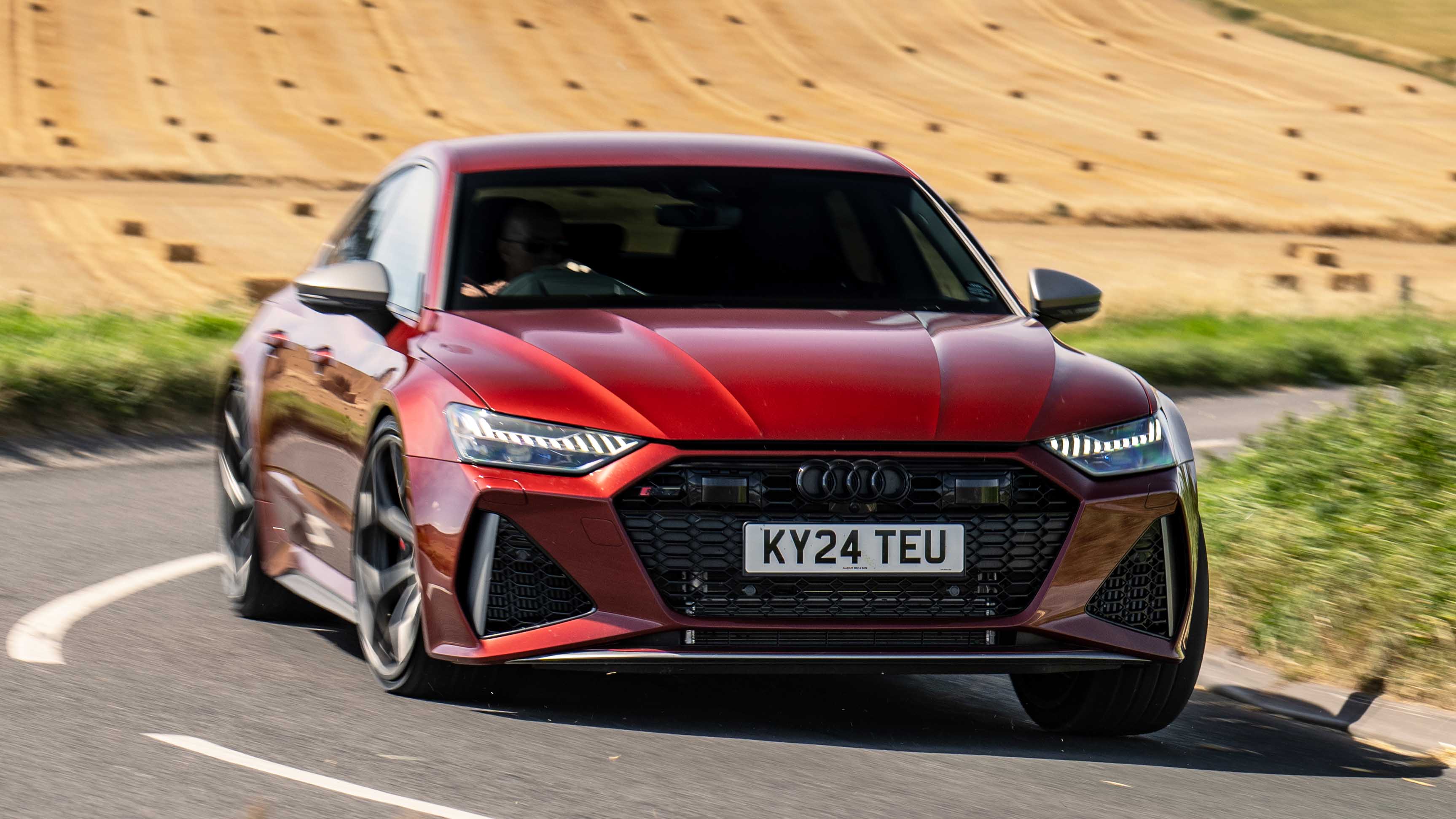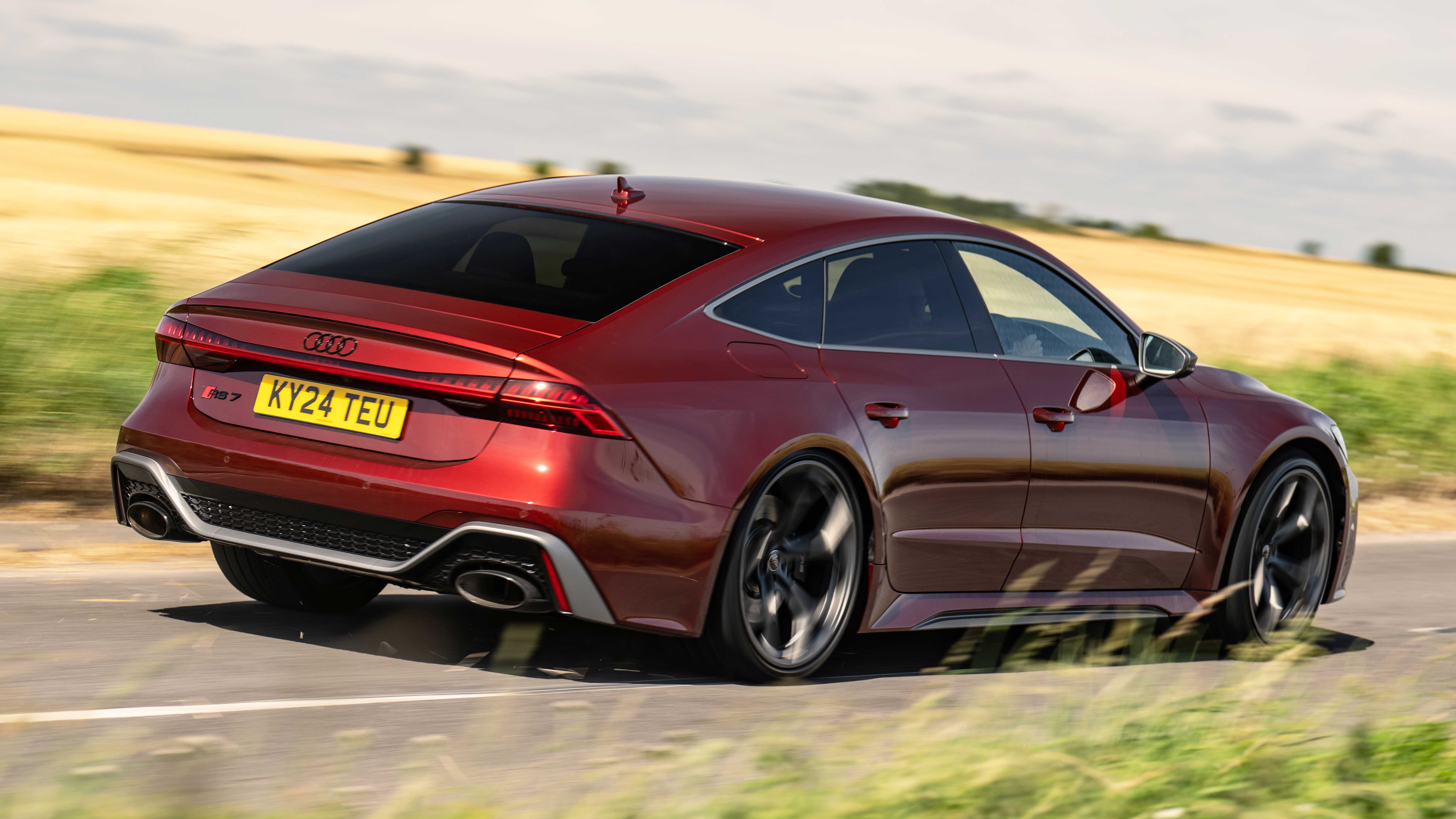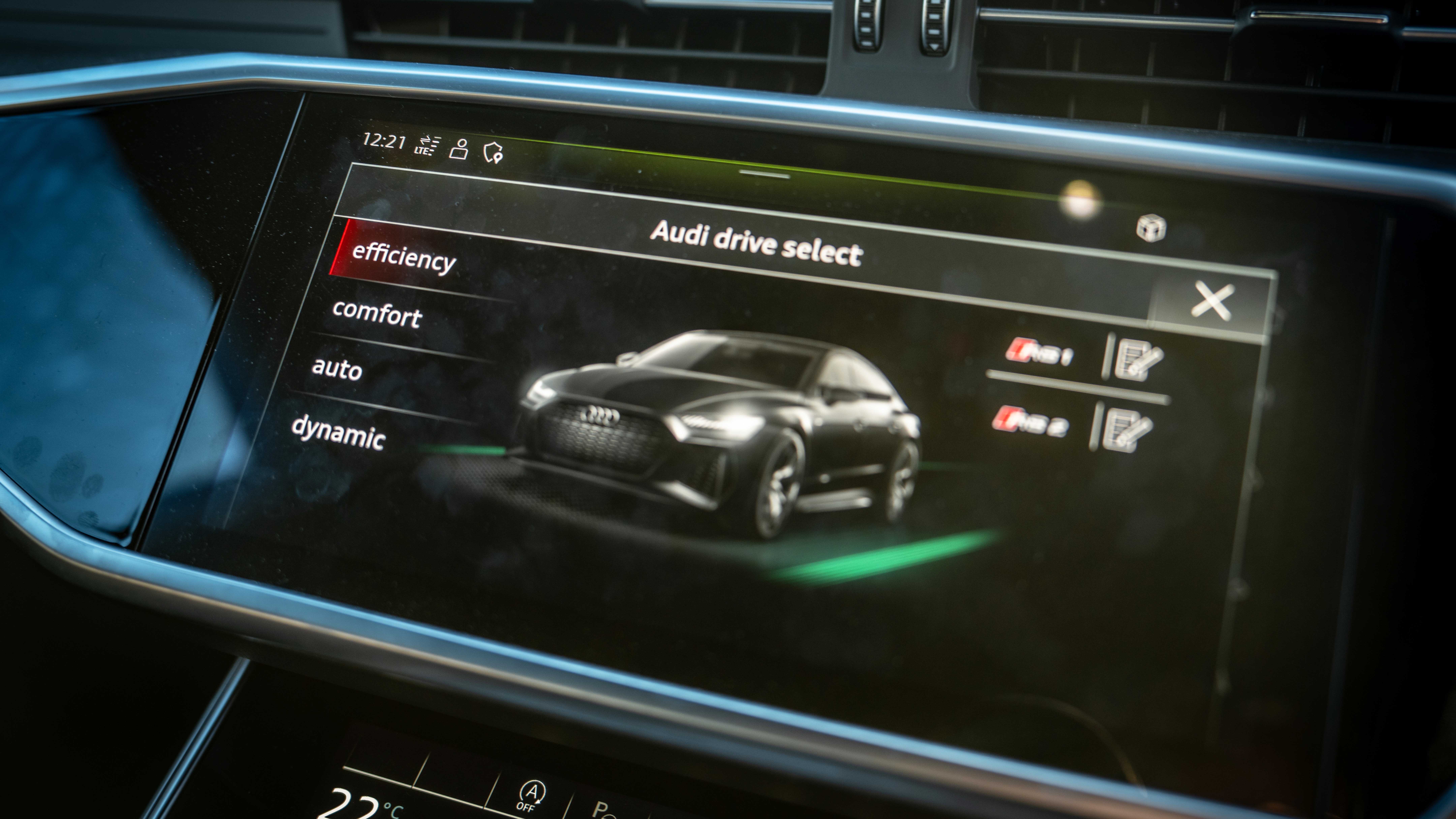
SPEC HIGHLIGHTS
- SPEC
Audi RS7
- ENGINE
3993cc
- BHP
552.5bhp
- MPG
28.8mpg
- 0-62
3.9s
Life with the Audi RS7: what's the best way to run in the 4.0-litre biturbo V8 engine?
Given that the RS7 arrived with less than 50 miles on the clock and a potent 620bhp biturbo 4.0-litre V8 under the bonnet, I was naturally mindful not to blow it up straight away. So, being mechanically sympathetic, I thought I’d see what the deal was with running it in. Big mistake.
Answering ‘what is the nature of consciousness?’ seems easier than ‘do I need to run in a car nowadays?’. If you ask the internet, no one seems to know – not even Quora. But it seems there are two very distinct opinions: the “don’t bother, floor it – engines are good to go out of the box!” brigade, and the “whoa-whoa-whoa, tickle the throttle for a thousand miles, change the oil, and then tickle the throttle until you sell it” camp.
After more online research and still no clear answer, I thought I’d consult the owner’s manual. And because it’s 2024, the manual is now an app – the ‘My Audi’ app. To be honest, the app is a bit pointless, and nowhere near as fun as Candy Crush. I’m sure if I were driving one of Audi’s e-tron EVs it would be better – letting me plan routes, check charging status, pre-condition the climate control, and do other EV-related tasks while waiting for the car to charge. But with an old-school V8, my options are limited.
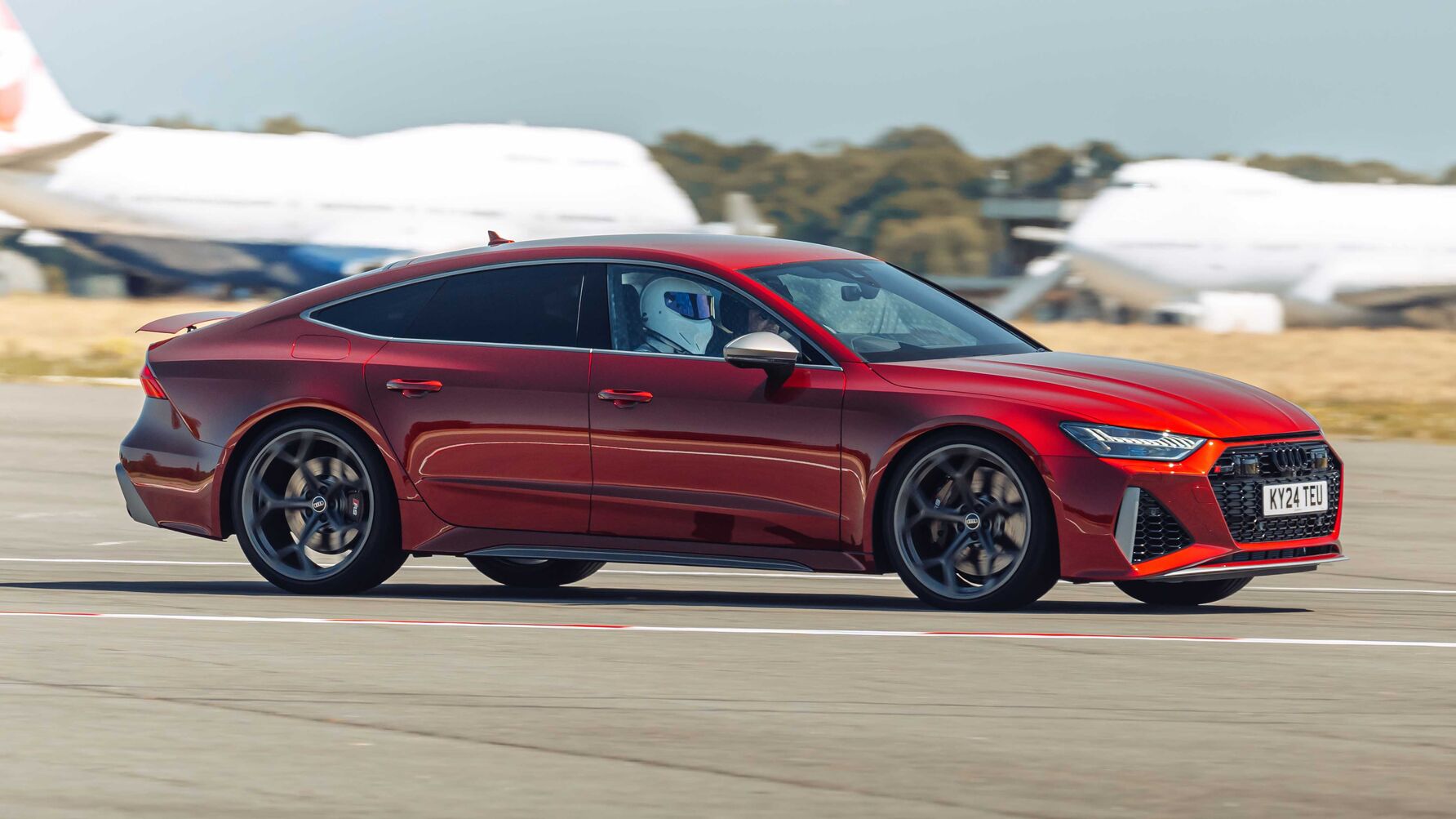
For us internal combustion engine enthusiasts, we can see how much fuel is in the tank, be misled by a notification that a window is open when it’s not, and remotely unlock the car from our phone. Oh, and I could also pay £15 (!) for someone’s holiday pictures to be my background, which is bonkers. It did provide one useful bit of information: for the first 600 miles, I should avoid exceeding two-thirds of the engine’s maximum RPM or going full throttle. After 300 more miles, I could start pushing it a little harder, and only after hitting four digits on the odometer could I give it the full beans.
So, the RS7 has been up and down the country, living in London but making trips to the Lake District, Yorkshire, and Devon in its first two months. With over 3,000 miles now on the clock, it’s fully broken in. The process has been worthwhile. The suspension, while not particularly forgiving (especially with those monstrous 22in wheels wrapped in minimal Continental sidewalls), has settled. The dampers now have a bit of give. The engine is also more efficient on longer runs. During the run-in, I averaged 17.1mpg, but now it’s doing 20.1mpg. On longer journeys, 29mpg is possible in the most efficient mode. However, if you take it to the track (as the Stig briefly did), flooring it will drop you into single digits.
What an engine. It’s a destructively energetic and powerful thing, working in tandem with the quattro four-wheel-drive system and rear differential to power you out of corners and towards the horizon. A proper track evaluation is needed, but at this stage, the engine is more of a talking point than the chassis, which struggles to handle the weight and favours neutrality rather than excitement.

When you’re not thinking about performance and living with the RS7 day-to-day, a few minor frustrations crop up. Firstly, more storage bins, trays, or cubbies up front would be nice. With the lovely double-decker screen setup, there’s no space to throw things in the transmission tunnel. You’ve just got two cylindrical cup holders, which are great for coffee cups but not for wallets and phones. A square peg still does not go into a round hole.
The two large, high-resolution displays (10.1in for the upper one, 8.6in for the lower) replace almost all switches and controls. As ever, they look great, and the haptic and acoustic feedback makes them rewarding to use, but they’re a bit too hesitant and slow once you’re used to the instantaneous nature of smartphones. However, Audi’s pioneering virtual cockpit behind the steering wheel remains a fantastic system.
Full disclosure: I’m not getting on with the seats. They’re too high, putting you into the headlining and making you feel distant from the car’s chassis and feedback. And, even though they’re heated and cooled, they aren’t tremendously comfortable or supportive. The RS6 GT we had at PCOTY had some comfortable bucket seats. I wish our RS7 had those. But I am impressed with the RS7’s four-wheel steering, which makes this lengthy lozenge manoeuvrable around town. Seeing those beautiful, minimalist spoked wheels turn themselves towards the kerb in a mirror while reverse parking never gets less nerve-wracking, though.
Something that has taken everyone by surprise – both in and out of the car – is the noise. The waffling, bassy, melodic thump of the V8 at start-up and idle is utterly tremendous. With even the world’s meatiest cars from BMW and Mercedes being robbed of a satisfying, sonorous V8 soundtrack due to increased regulation and OPF filters, I’m amazed Audi has managed to get it through the standard. Better still, they’ve made it even more enjoyable in the cabin, thanks to reduced sound insulation between the engine and the interior. Wunderbar. We must celebrate these things while we can.
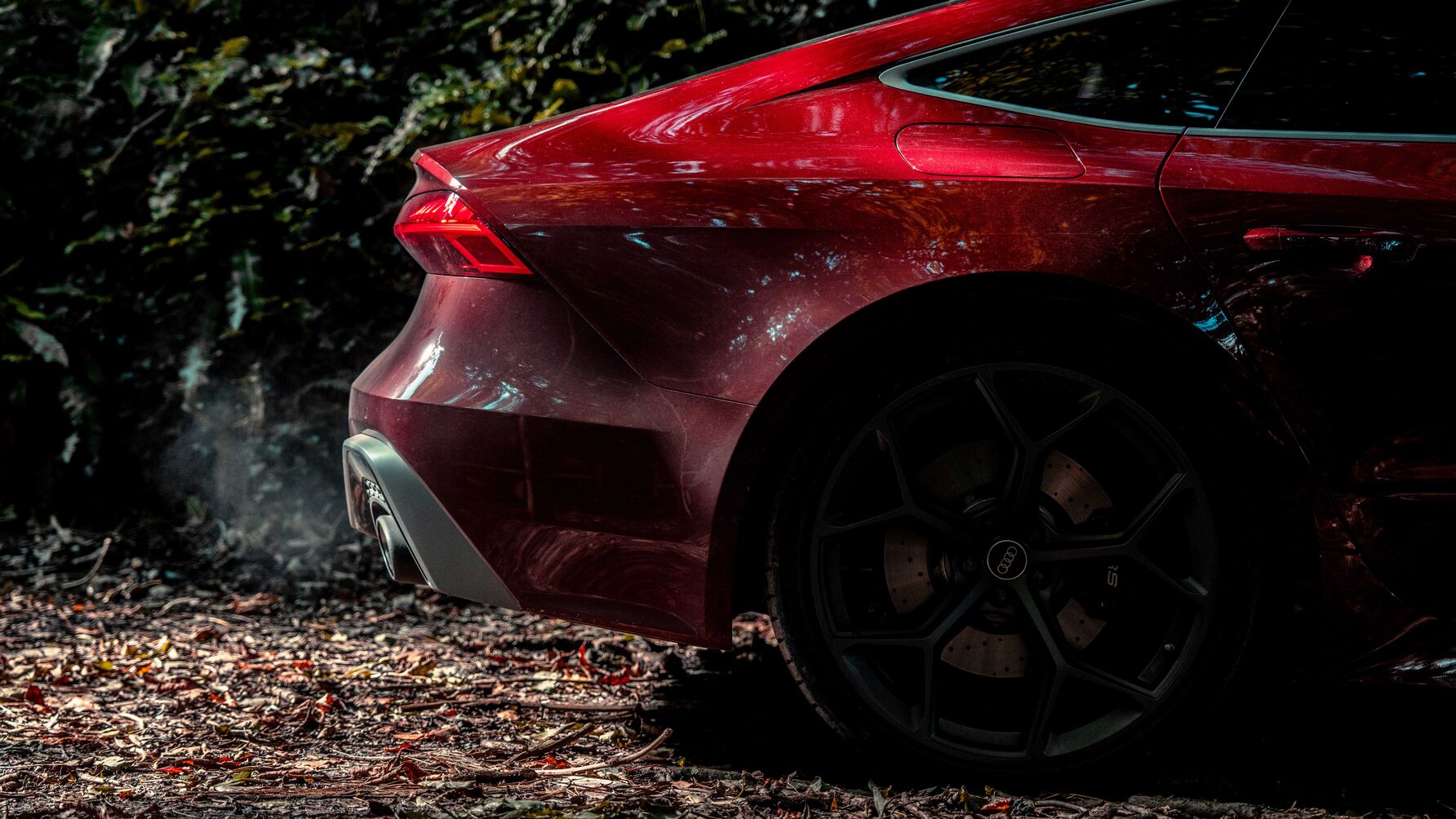
Featured

Trending this week
- Car Review
BMW iX3




